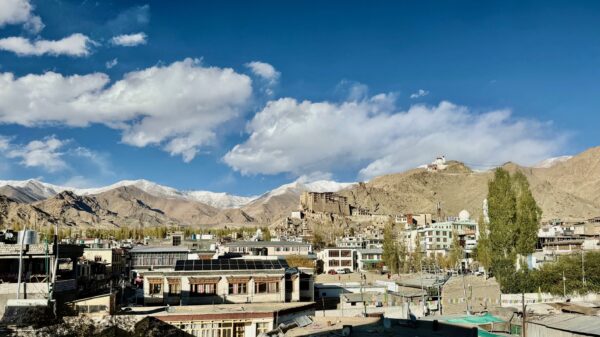An inside look at Ladakh’s unrest – and the mood in the region today.
Ladakh is extremely important for India owing to its strategic location as it sits between India, China and Pakistan.
LEH, LADAKH: Prayer flags flutter under clear skies, in the winter breeze that wraps Ladakh – India’s northernmost frontier. Instead of loud laughter and trailing tourists, an ominous silence lurks around the lanes of Leh, the capital of Ladakh.
Over a month ago, the unimaginable happened in Leh; since then, the cold desert region barely speaks and shrinks at the thought of asking questions and demanding rights.
On September 24, police opened fire on protesters demanding statehood and constitutional safeguards, killing four people and injuring more than 90. The demonstration had begun peacefully, led by activists, students, and other locals, but ended in chaos, as the crowd scattered under gunfire. A curfew and internet bans followed.
Ladakh’s location, wedged between India, China, and Pakistan, makes it one of the world’s most strategic yet fragile frontiers. Local feels that the September 24 incident in Leh has transformed their struggle for constitutional rights into a flashpoint between the people and the state, unsettling a border zone already shadowed by militarization and mistrust.
Demanding Democracy
Six years ago, in 2019, the Modi government revoked Jammu and Kashmir’s autonomy.
Continue Reading on The Diplomat
This preview shows approximately 15% of the article. Read the full story on the publisher's website to support quality journalism.
